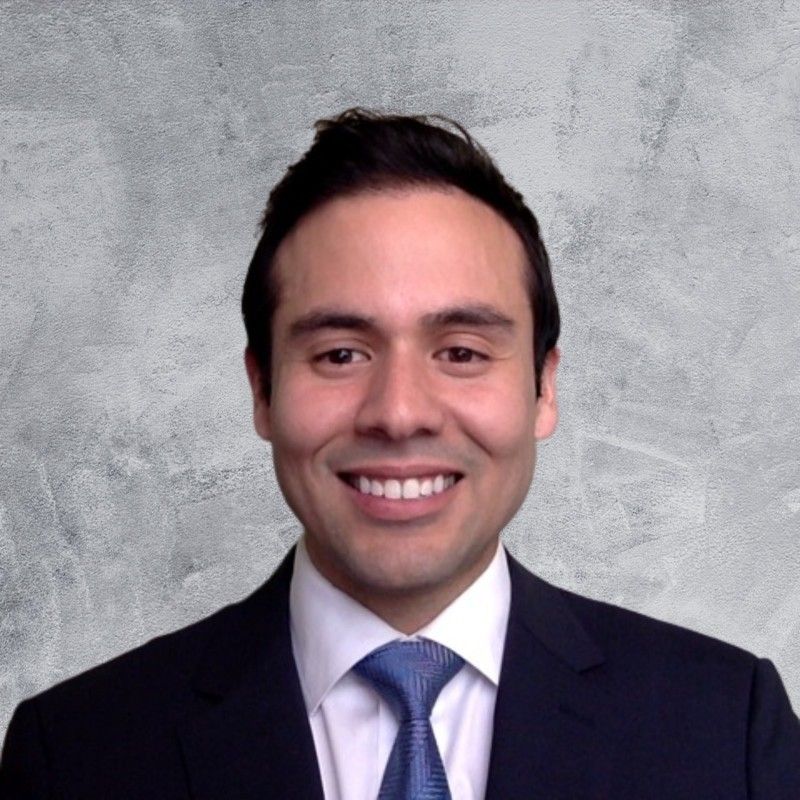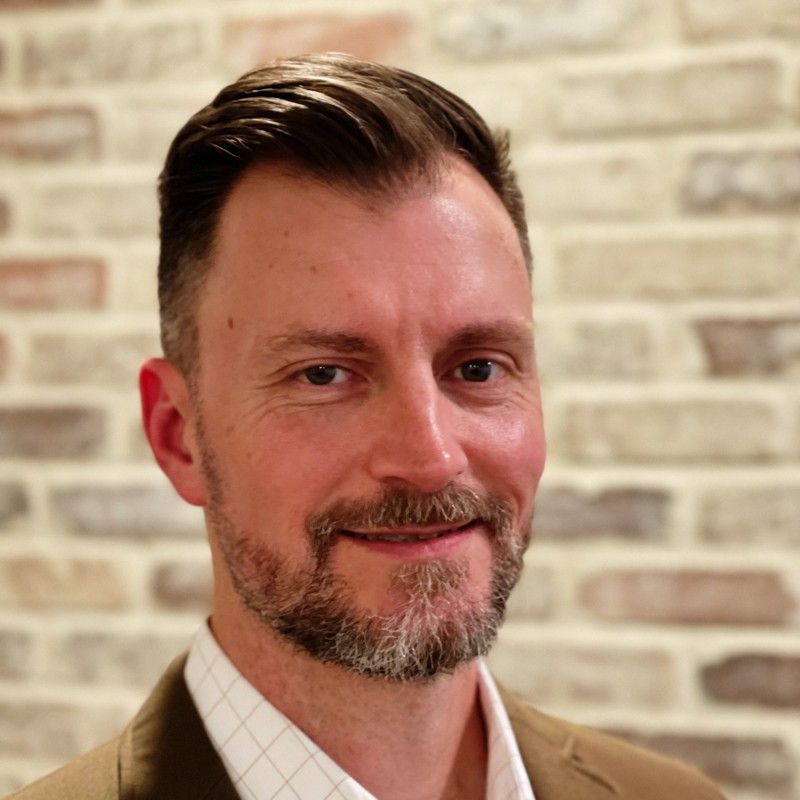Advanced Software Design Course
by Mirdin
Unleash your full potential as a software engineer:
- Make yourself stand out from the crowd
- Eliminate impostor syndrome today
- Guaranteed transformational results in hours
- Rise above subjective debates. Give concrete suggestions your team will understand and respect
- Escape software influencer dogma. Get your own compass.
- Join a buzzing community of over 350 top-level engineers who love to help you with your latest design challenge.
- We will help you towards your goals with 1-on-1 sessions.
- Curriculum developed based on learning science that works.
- Over 100 hours of content 100% at your own pace
Software Design Quiz
99% of software engineers can’t answer these questions
Testimonials

Stephen Balaban
CEO, Lambda Labs
Jimmy is an intelligent, patient, and deeply knowledgeable coach. His sessions have markedly improved my code’s architecture and modularity. In addition to becoming a better SWE, I’m now a better manager and coach to the other engineers on my team.
I went into the program with over five years of software engineering experience and an undergraduate degree in Computer Science; I came out wishing that I had started working with Jimmy sooner. Simply put, if you want to become a more effective engineer, I highly recommend working with Jimmy.

Ned Nguyen
Senior Staff Software Engineer, Google
As a tech lead at Google, I have always been trying to improve my software design skills. I decided to sign up for Jimmy’s class after looking at the overview of its content.
Jimmy is a fantastic instructor. He spends a lot of time reviewing my homeworks & answering questions. The reading materials & exercises are top notch. Before Jimmy’s class, I had vague ideas of how to write code “the right way.” After this class, I have a lot more clarity in terms of writing good code and designing better software.
I find myself better at articulating my design rationale, and having easier time aligning people’s opinions on difficult decisions. My colleagues also said they noticed my code reviews are a lot more objective and convincing.

Connor McCormick
Co-Founder at Network Goods Institute
Jimmy is an incredible educator. He has a way of carving concepts at the joints and gives really clear examples. Thanks to the course, I'm better at thinking about system dynamics and can run larger systems in my head.

Jakub Nowakowski
Co-Founder at BetEngine
After going through just a few lecture videos from the Mirdin course over a couple of days, I was able to bring a fresh level of clarity to a project I’ve been leading for the past two years. During a call with my team, I revisited several design decisions we had been considering and was able to clearly articulate how they might lead to long-term issues as we scale. The course helped me connect theory to practice almost immediately.

Bryan Andrade
CTO, Atlas Health
Don’t repeat yourself. Don’t use magic numbers in your code. As experienced developers, we’ve all heard advice like this. We have decent intuition for “good” code. After watching Jimmy’s Strange Loop presentation and his explanation of citrus advice, I realized that much of the software design tips available have some truth embedded in them, but are imprecise. There are deeper truths for those who want to find them. Jimmy created a set of principles that we can use to build better software. From his principles, advice like those above can be derived and understood.
The course is challenging, but Jimmy will go out of his way to make sure you grasp the material. After the first week of the course, I noticed improvements in my code. By the middle of the course, I was more aware of all the decisions I was making when writing code, and I started changing some of my old habits.
I particularly enjoyed the refactoring exercises and one-on-one coaching sessions. If you are committed to improving your software design skills, work with Jimmy.

Dennis Lumpkins
Principal Engineer, T-Mobile
I’ve learned more from the first 2 weeks of Mirdin’s course than from 2 years of grad school

Yoonseo Kang
CEO, Guidebolt Robotics
After working 1-on-1 with Jimmy years ago, I had both of my engineers take Mirdin’s course recently. Since taking the course, I have sensed during design reviews that their understanding of software design has greatly elevated.
As a result of their improved understanding and communication, we now routinely achieve better clarity on a design in 15 minutes than we previously could in an hour.

Ben Toner
Co-founder and Chief Scientist at Affinda
Mirdin's Advanced Software Design course is the only course I recommend to professional software engineers. Let me explain why. Software engineering is one of those professions where skills are mainly accumulated through experience. Sure, you can learn to code from a course, but the technical skills that separate a junior engineer from a staff engineer are usually hard-won, accumulated over many years.
Jimmy has distilled many of these concepts into modules that you can instead learn in a couple of hours! How can you say no to that? It's a unique offering and extremely good value. For me, it was especially good to put words and frameworks around some of the things that I would do, but was somehow unable to communicate to my team. Wholeheartedly recommended!

Benjamin Duron
Software Engineer
Yesterday was my last day of a 13-month freelance project as a backend architect in a SaaS startup. It was so rewarding to be able to apply the course concepts to build their product from scratch. I've read a lot of books about SWE, but found myself only using the ones from the course most of the time. That's how useful they are!
Thanks to the things I learned in this course, the code has always been able to evolve without rewrites when new requirements were introduced.

Christian Vanderwall
Software Engineer, Spacebase
I loved this course! Thanks to working with Jimmy, I now have a much better framework for evaluating software design. My designs are cleaner, and I feel more confident that my design decisions will stand the test of time.
I was also pleasantly surprised by the community Mirdin has created. All of my classmates were wonderful, and the Advanced Sofware Design Slack channel has become a great source of support, inspiration, and fun. I'm a solo developer, so I feel lucky to have found a group of like minded people I can discuss interesting problems with.

John Tran
Tech Lead, ONEHOPE Wine
I just took Jimmy's Advanced Software Design course and it totally changed the way I've seen code.
His sections on code refactoring set off light bulb moments for me.

Azhar Desai
Software Engineer, Thinkst Canary
This course should be renamed "Jimmy's Finishing School For Software Wizardry."
Jimmy's course has changed my day-to-day thinking about software design. It's easier for me to reason and talk about how a line of code will hinder or help future code changes. I can motivate changes more clearly to others on my team when reviewing designs and code.
The course replaced some unhelpful intuitions I had from several years of software engineering leaving a simpler, better fortified base. And did I mention how well-curated the course readings were? Unlike much writing on software design drifting about, these were rewarding to read closely.

Tyrone Avnit
Software Engineer, Civic Technologies
You can tell straight away that Jimmy has a deep passion for designing software and designing it well. The course can be challenging, but it pushes you to be a better software engineer by forcing you to think more carefully about every design decision you make.
The carefully curated resources that James provides are alone worth taking the course, but for me it was the little spark it triggered inside. I have a deep passion for learning, and this course has given me the confidence and roadmap to go deeper and become that much better by working hard at it everyday.

Cameron Yick
Software Engineer
This class far exceeded my expectations. Since completing the course, some aspect of his lessons have affected how I write my programs and code reviews every single day.
Simply put, this is one of the best courses I have ever enrolled in, online or otherwise. The exercises and content for each of the 6 weeks are dense enough to fill a month of study. However, the core concept for each contains practical recommendations that were integratable into my code as early as the day after each lecture.
I pursued Computer Science/Electrical Engineering in my undergraduate studies, and have worked in 2 technology startups. Each of the weekly topics were either completely new to me, or presented in "stickier" form than I had ever previously encountered.
Aside from the high quality and actionability of the content, the other critical ingredient in this course is the personalized feedback from Jimmy. He is thorough, thoughtful, and skilled at guiding students towards not just the right answers to exercises, but also helping them to develop intuition and processes for solving similar problems in the future.

Jess Smith
Software Engineer
Three great things happened because I took Jimmy's course. First, I built a vocabulary for expressing my concerns about software design. This vocabulary, when applied to code smells, gives me related examples that can help generate specific failure modes.
Second, I learned how to tell what debates about software are worth engaging in. Some debates are just taste, and some have deep engineering implications. This has sped up my reading because I can filter out a lot of noise.
Third, I gained a sense of the larger world of software design. The course's resources section has changed my views on design and software as a whole. I know that these articles will be a source of inspiration and knowledge for a long time to come.

Andrew Edwards
Software Engineer
The Advanced Software Design course has transformed the way I work. After the first lectures, I quickly began to see where software I had written could be improved. By the end of the course I felt confident that I knew exactly how, and why, to improve it.
Recently, I've been interviewing for new contracts, and the knowledge I now have has helped make it far easier to impress. In particular, interview code exercises are easier as I can more easily come up with, and discuss, a design first, a method which has really helped to express my level of knowledge without getting bogged down in code level problems.
I also feel that I now have a clear way to appraise and filter programming advice, something that's invaluable in a fast moving industry. Thanks Jimmy!

Steve Phillips
Software Engineer
Mirdin's Advanced Software Design Course was fantastic. I've found myself immediately applying what I learned, especially when it comes to preventing subtle dependencies between components.
It's about time that software design evolve from a pile of opinions into a science. Bravo, Jimmy, for taking us a huge leap in that direction!
Eve
Product Manager
As a self-taught programmer who works as a Product Manager and aspires to be a CTO, I wanted to grow my technical abilities so I could better contribute to my team. I decided to work with Jimmy because I wanted to accelerate my progress and become more capable at identifying good and bad software architecture patterns.
Before we started working together, I was shy about participating in more technical work on my team and didn't have a concrete growth trajectory planned out for myself. Since I started working with Jimmy, I've developed the confidence to participate in code reviews with my team and assist with various technical challenges. I have gained a better understanding of my strengths and weaknesses, and I am much more equipped to set realistic goals for my technical growth.
My intuitive sense of how to write clean, effective code has been honed, and I can't wait to continue learning from Jimmy.
Sarah
Senior Software Engineer
Jimmy took me from being that coder that people tolerated because of "potential" and taught me so much that I had Google and Facebook fighting over me, then had all the hottest teams at Facebook fighting over me. Oh, and my salary increased 67%.
Chase
Palo Alto
Jimmy has a wizardly knowledge around software design. There were several instances in which I asked him questions that I didn't expect would have a nicely packaged answer, and he somehow was able to arrive at one. He's able to take the ambiguity of how to "design a software system" and be very explicit and clear about how things should or shouldn't be done, and the reasons behind them.
There really isn't another place or person I know of that's able to teach software design as uniquely and effectively as Jimmy. I frequently see many of the topics I've learned come up in practice and now know what to do in those situations.
Amir
Software Engineer, New York City
I was fired from a FAANG and told I would never reach the next level, but somehow got hired to that level at a different FAANG anyway. But it’s thanks to Jimmy I was able to perform at that level.
Within months, I had senior employees assuming I must have been there for years, and was exceeding manager expectations. The only explanation for my improvement is working with Jimmy.
Follow in the footsteps of Professionals from Top-tier Companies!
























Programmers learn by making bad design decisions, working on the codebase for a year, and then find themselves wishing they could go back and do things differently. We can give you that experience in an hour.
INSIDE THE COURSE
Six core units aimed to refine your coding approach, enhance your design skills, and elevate your competency to meet the industry's urgent needs.
Unit 1 | The Hidden Layer of Logic
Discover the key distinction between design and implementation in our first unit. Master Hoare triples to unveil code complexity, laying a solid foundation for software design mastery.
- Why design is conceptually different from implementation, and what this means for building robust code.
- How it’s possible for code that never fails to still contain a bug.
- Understanding how code that looks simple may actually be complex, and how to avoid writing code likely to break in the future.
- Hoare triples, a simple method of specification that lets you see complexity as concretely as the code itself.

The Hidden Layer of Logic |> View Lessons

Unit 2 | The Embedded Design Principle
- Understanding that code can be mechanically derived from a design, and how this perspective de-mystifies system design.
- Using the Embedded Design principle to better structure your code.
- Understand the most general forms of couplings. Learn to to spot and eliminate hidden coupling, and prevent 10-minute tasks from becoming 100-hour tasks.
The Embedded Design Principle |> View Lessons
Unit 3 | The Representable/Valid Principle
- Understanding how to partition the state space of code and reduce the possibility of failure
- How to design data structures and APIs that cannot be misused.
- How to design code that contains zero error-checking, but is less likely to fail than even the most defensively-written code.

The Representable/Valid Principle |> View Lessons

Unit 4 | The Data Over Code Principle
- Parnas’s 40 year-old “secret” of information hiding.
- How to use information hiding to make your code more modular and easier to extend.
- How organizing your program around data structures can make your code cleaner.
- How an extreme application of this principle can help you understand systems 3x more quickly.
The Data Over Code Principle |> View Lessons
Unit 5 | Algebraic Refactoring
- Understanding sum and product types, and how common data structure patterns in most languages are just special cases of these two fundamental constructs.
- How most common refactorings are special cases of a handful of rules.
- How refactoring a program can be isomorphic to factoring polynomials in algebra.

Algebraic Refactoring |> View Lessons

Unit 6 | Future-Proofing
- Learning to spot and sequester the assumptions in individual lines of code.
- Using the Liskov substitution principle to make your code compatible with future versions of itself.
- Using the theory of subtyping to anticipate and avoid “complexity ratchets” that could make your code treacherous to modify in the future, and impossible to clean up.







